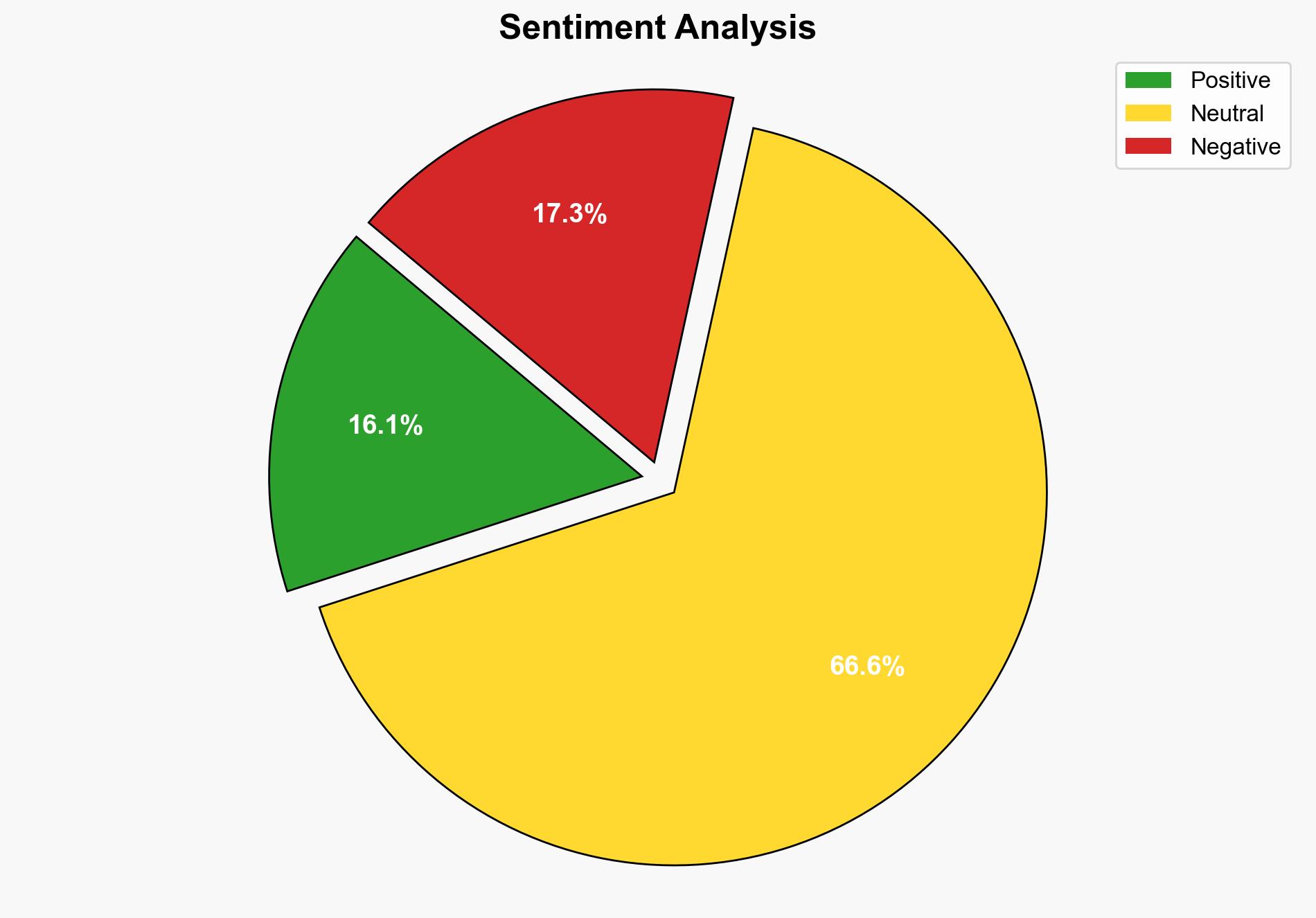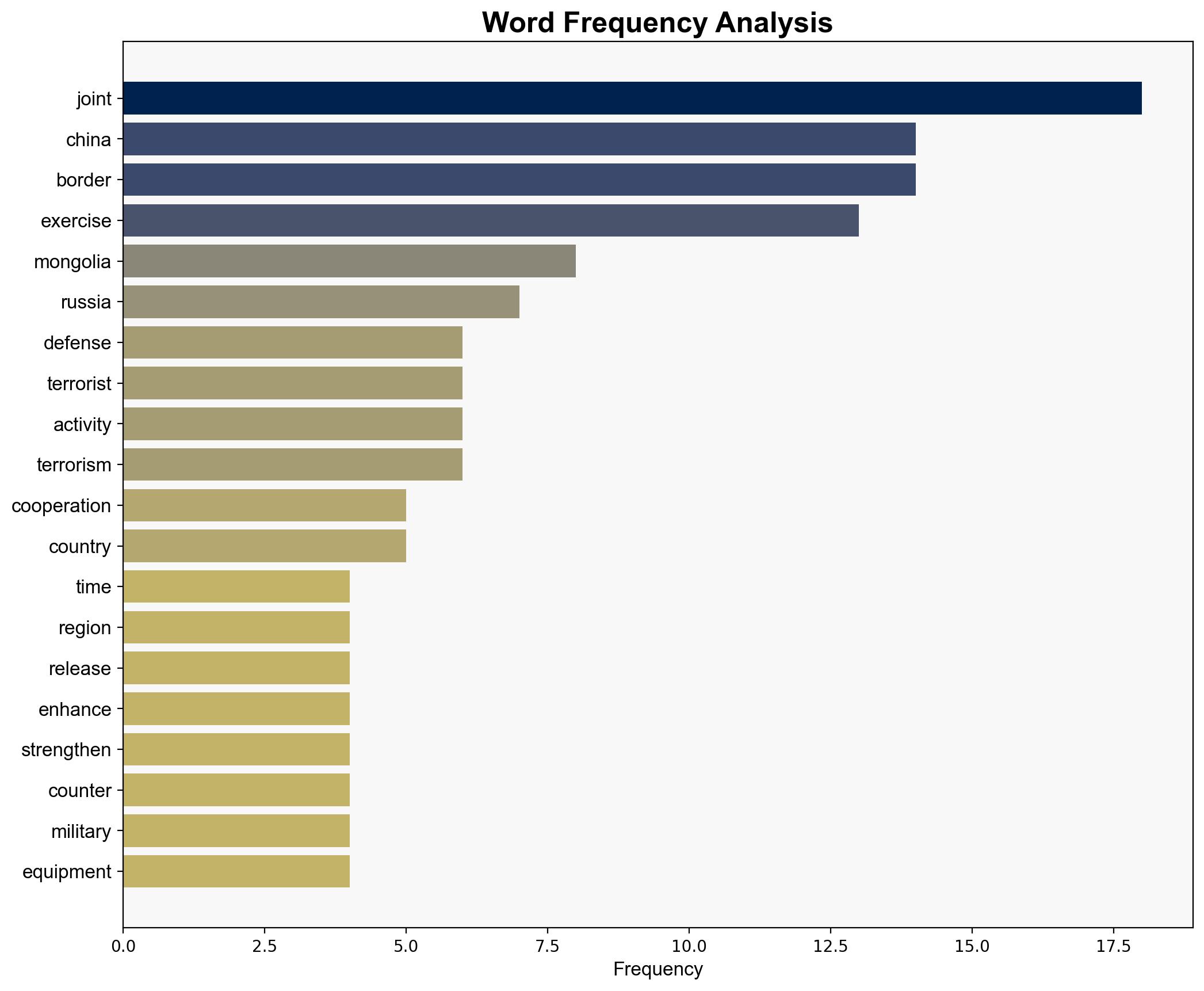China Russia and Mongolia conduct joint exercise in border area – Globalsecurity.org
Published on: 2025-09-10
Intelligence Report: China Russia and Mongolia conduct joint exercise in border area – Globalsecurity.org
1. BLUF (Bottom Line Up Front)
The joint military exercise involving China, Russia, and Mongolia is likely a strategic maneuver to enhance regional security cooperation and counter-terrorism capabilities. The most supported hypothesis suggests a focus on counter-terrorism and border security, with a moderate confidence level due to limited transparency on specific objectives. Recommended action includes monitoring technological advancements in military exercises and assessing their implications for regional stability.
2. Competing Hypotheses
Hypothesis 1: The exercise is primarily aimed at enhancing counter-terrorism capabilities and border security among the three nations. This is supported by the emphasis on joint prevention and combat of terrorist activities, as well as the use of advanced technologies like drones and robotic dogs.
Hypothesis 2: The exercise serves as a demonstration of strategic military alignment and power projection by China and Russia, using Mongolia as a geopolitical buffer. This hypothesis considers the broader geopolitical context and historical military cooperation between China and Russia.
3. Key Assumptions and Red Flags
– **Assumptions:** Both hypotheses assume that the joint exercise is a genuine effort to enhance security and not a cover for other strategic objectives.
– **Red Flags:** The lack of specific details about the exercise’s location and objectives raises questions about transparency. The involvement of advanced technology could indicate preparation for broader military applications beyond counter-terrorism.
– **Blind Spots:** Potential underestimation of Mongolia’s role and interests in the exercise, as well as the reaction of neighboring countries.
4. Implications and Strategic Risks
– **Regional Security:** Enhanced military cooperation could deter regional threats but may also provoke neighboring countries, leading to an arms race or increased tensions.
– **Technological Advancements:** The use of high-tech equipment suggests a shift towards modern warfare tactics, which could escalate cyber and electronic warfare capabilities.
– **Geopolitical Dynamics:** Strengthened ties between China and Russia might challenge U.S. influence in the region and impact global power balances.
5. Recommendations and Outlook
- Monitor developments in military technology used in these exercises to assess potential threats and opportunities.
- Engage in diplomatic dialogues with regional partners to mitigate tensions and promote transparency in military activities.
- Scenario Projections:
- Best Case: Strengthened regional security cooperation leads to reduced terrorist activities and enhanced stability.
- Worst Case: Increased military alignment between China and Russia leads to regional destabilization and an arms race.
- Most Likely: Continued joint exercises with incremental improvements in counter-terrorism capabilities and regional security.
6. Key Individuals and Entities
– Song Zhongping: Chinese military affairs expert
– Zhang Junshe: Military affairs expert
– Jiang Bin: Spokesperson for China’s Ministry of National Defense
7. Thematic Tags
national security threats, cybersecurity, counter-terrorism, regional focus




